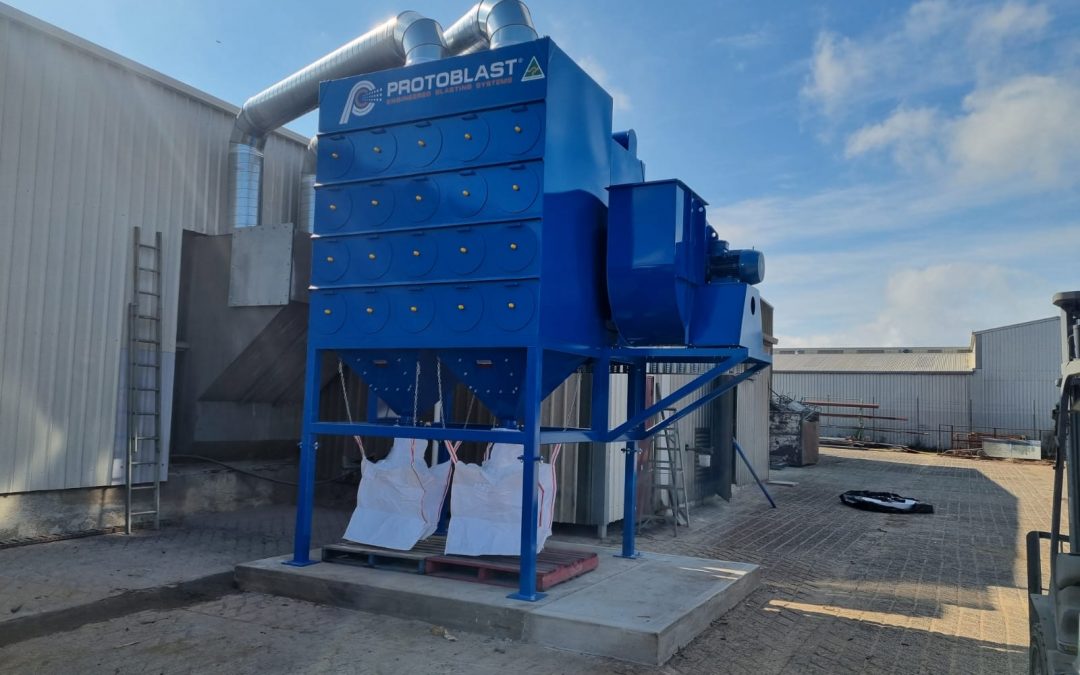Dust collectors play an essential role in maintaining good air quality and visibility in Abrasive Blasting Chambers. However, improper installation, maintenance, and troubleshooting can lead to common problems that impact the performance of the equipment. In this blog post, we will discuss the most common problems that can occur during dust collector installation and maintenance, as well as tips and strategies for troubleshooting issues.
Lack of Proper Planning and Preparation
One of the most common problems during dust collector installation is a lack of proper planning and preparation. Before installation, it is important to assess the needs of the facility, choose the right equipment, and design efficient ductwork. This will ensure that the dust collector is properly sized, installed in the right location, and equipped with the right filtration system. A lack of planning and preparation can lead to poor performance and costly repairs in the future.
Incorrect Sizing of Equipment
Another common problem, and a very important step in the procurement process, is ensuring the correct sizing of equipment. If the dust collector is too small, it will not be able to handle the dust produced by the facility, leading to reduced performance, decreased air quality, and premature filter failure. If the dust collector is too large, it will be more expensive to operate and maintain than necessary. It is important to properly size the equipment based on the needs of the facility, taking into account the amount of dust produced, the size of the facility, and the type of abrasive.
Poorly Designed Ductwork
Ductwork is an essential part of the dust collector system. Poorly designed ductwork can lead to reduced suction power, clogs, and leaks. It is important to design efficient and effective ductwork, with proper sizing, airflow, and layout. This will ensure that the dust collector is functioning at its best and that the air quality in the facility is maintained.
Inadequate Filtration
Proper filtration is essential for maintaining good air quality in the Abrasive Blast Chamber. Inadequate filtration can lead to the release of harmful particles into the air, which can have serious health consequences for workers and people in the surrounding area. It is important to choose the right type of filter for the facility and to ensure that it is properly maintained and replaced when necessary. The other consideration with regard to filters is the surface area of the filter. What is referred to as the “air-to-cloth ratio” is in simple terms the velocity of the air as it passes through the filter media. A high air-to-cloth ratio results in a high velocity which can cause harm to the filters leading to leaks and premature failure.
Inadequate Maintenance
Ensuring proper maintenance is crucial for maximizing the performance and lifespan of the dust collector system. Inadequate maintenance can lead to reduced suction power, clogs, leaks, and other issues. It is important to perform regular maintenance tasks, such as cleaning the system, checking for leaks, and replacing filters. By taking proactive steps to maintain the system, the facility can ensure that the dust collector is functioning at its best and that the air quality is maintained.
By following these tips and strategies, facility owners and operators can avoid common problems with dust collector installation, maintenance, and troubleshooting. Proper planning and preparation, correct sizing of equipment, efficient ductwork design, proper filtration, and adequate maintenance are essential for maintaining good air quality and maximizing the performance and longevity of the dust collector system.
What are the next steps to take?
Get in touch with us and we can provide you with expert advice and guidance on how to get the best out of your abrasive blasting facility.
Give us at Protoblast a call on 1300 011 583 or complete our online form.

